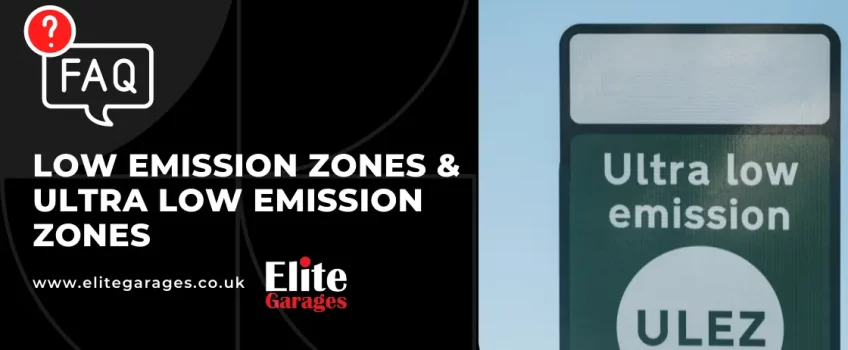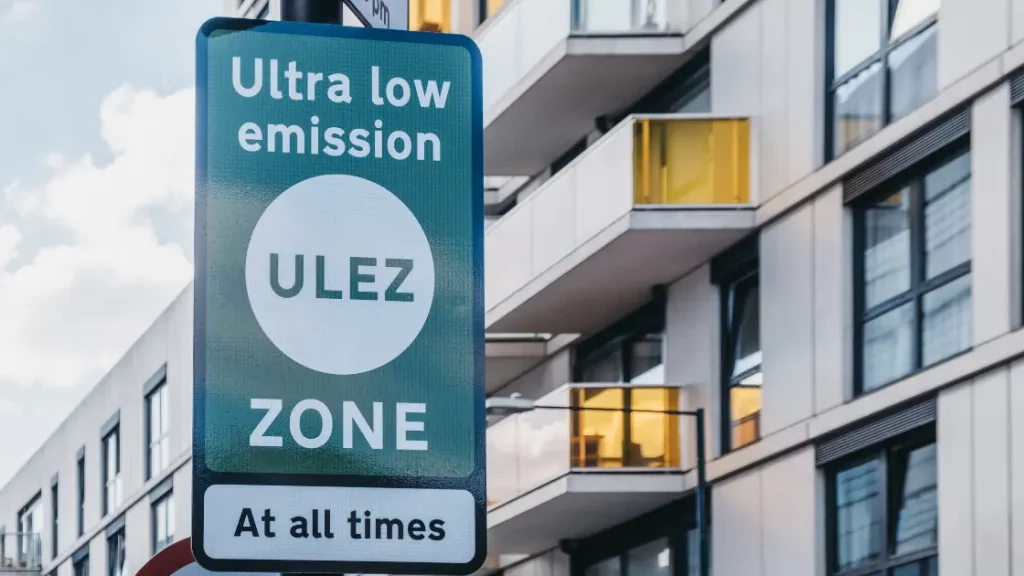
Everything You Need To Know About Ultra Low Emission Zones
Considering that pollution and global warming are major political talking points, you’ve undoubtedly heard phrases such as “Low Emission Zones” and “Ultra Low Emission Zones”. In this article, we explain what these zones are and which cars are affected but first, let’s find out what is meant by low emissions.
What Does Low Emission Mean?
Emissions are the gases that your car’s exhaust emits when in operation. Most of these by-products damage the environment and contribute to pollution. As such, a low-emission vehicle doesn’t produce as much pollution and is more eco-friendly. With that in mind, here are some FAQs about low emission zones and ultra low emission zones or ULEZ.
What Are Low Emission Zones (LEZs)?
A Low Emission Zone (LEZ) is an area in which only vehicles that meet certain emission standards are allowed to enter. These standards vary depending on the location but, for the most part, only newer vehicles with low emissions are granted access.
The aim of these low emission zones (LEZ) is to improve air quality by reducing the number of harmful pollutants that cars produce. In doing so, it is hoped that the number of respiratory illnesses will be lowered, as well as the overall level of pollution.
What Are Ultra Low Emission Zones (ULEZs)?
An Ultra Low Emission Zone (ULEZ) is very similar to an LEZ, except that the emission standards are even stricter. In London, for example, vehicles must meet Euro 6 emissions standards in order to enter. While the use of LEZs is already strict, ultra low emission zones are even more stringent where just about any car is banned from entering except those that produce very little to no CO2 emissions.
LEZs have been implemented in a number of major cities around the world, including London, Berlin, and Paris. If you plan on driving in one of these areas, it’s important to check the local emission standards before doing so.
Do I Have To Pay The ULEZ Charge?
If you drive a petrol or diesel car that doesn’t meet the Euro 6 standards, you will have to pay the ULEZ charge. The same applies to motorcycles, vans, and other vehicles that don’t meet the specific emissions standards. At the time of writing, the charge for driving through ultra low emission zones is currently £12.50 per day for most vehicles.
What Happens If You Drive In Ultra Low Emission Zones?
If you drive through an ultra low emission zone without meeting the necessary emission standards or paying the daily rate, you may be subject to a fine. In London, for example, the fine for driving through a ultra low emission zone by car, van, motorcycle, tricycle or moped that doesn’t meet the standards is £160 (about $200). ULEZs are becoming increasingly common as cities look for ways to improve air quality by reducing CO2 emissions. The good news is that there are a number of ways to avoid the charge, such as registering your vehicle or changing your route to avoid LEZs and ULEZs.
What Does It Mean If A Car Is ULEZ?
If a car is ULEZ compliant, it means that it meets the necessary emission standards and can be driven in ultra low emission zones without having to pay the daily charge. While the standards vary depending on the location, most newer vehicles with low emission ratings are granted access. If you drive a petrol or diesel car that was registered before 2006, for example, you’ll likely be affected as these cars don’t meet the necessary emission standards.
How Do I Know If My Car Is ULEZ Compliant?
The easiest way to find out if your car is ULEZ compliant is to check the DVLA website. You can also contact your local council or the Department for Environment, Food & Rural Affairs (DEFRA) for more information.
How Do I Know I’ve Entered Ultra Low Emission Zones?
If you’re driving in London, you’ll see signs at the entrances to the ultra low emission zones which will tell you what type of vehicle is allowed to enter. ULEZ zones are also marked on street maps which can help when planning your journey since you can find out if a particular address is in a ULEZ. Have you considered using TfL’s online journey planner?
What Cars Are Exempt From Ultra Low Emission Zones?
The ULEZ standards vary depending on the type of vehicle. Euro 3 standards are for motorcycles, mopeds, motorised tricycles and quadricycles (L category). Euro 4 (NOx) is for petrol cars, vans, minibuses and other specialist vehicles while Euro 6 (NOx and PM) cover diesel cars, vans, minibuses and other specialist vehicles.
Cars that are exempt from ultra low emission zones include electric vehicles, hybrid cars, and certain types of fuel-efficient cars. You can find out more about the specific exemption criteria on the government website but below we’ve included some of the more common ULEZ-compliant vehicles:
- Electric cars: Tesla Model S, BMW i3, Nissan Leaf
- Hybrid cars: Toyota Prius, Lexus CT 200h, Mercedes-Benz C 300h
- Fuel-efficient cars: Volvo V60 D5, Audi A3 e-tron, VW Golf GTE
What Are The Benefits Of Ultra Low Emission Zones?
Ultra low emission zones are designed to improve air quality by reducing emissions from vehicles. This can have a number of benefits for both the environment and public health, including:
- Reduced air pollution has been linked to a number of health concerns, such as respiratory problems and heart disease
- Reduced noise pollution is known to cause several problems, including sleep disturbance, stress, anxiety and cardiovascular disease
- Ultra low emission zones can improve the quality of life by making cities cleaner, quieter and more pleasant places to live
What Are The Disadvantages Of Ultra Low Emission Zones?
While there are a number of benefits to low emission zones and ultra low emission zones, there are also some potential drawbacks, including the following:
- The cost of upgrading or replacing vehicles that don’t meet the necessary emission standards
- Rerouting journeys to avoid ULEZs is inconvenient and can often extend trips considerably
- The financial impact on businesses that rely on delivery vehicles that don’t meet the standards
How Do I Avoid Ultra Low Emission Zones?
If you want to avoid paying ULEZ charges, make sure your vehicle is ULEZ compliant and if not, upgrade or replace it if possible. As mentioned earlier, you can also plan your journey well in advance to avoid routes that include ULEZs.
If you don’t think your car will meet the standards, there are a few alternatives to consider. You could take public transport as buses and trains don’t need to abide by the emissions standards. Where possible, cycling or walking are great alternatives to ULEZs which also helps to keep you active.
Since electric vehicles meet all the emissions standards, if you are looking for a new car and regularly drive through ultra low emission zones, an EV is your best bet. Here are some of the best electric vehicles currently on the market.
Final Thoughts
Ultra low emission zones are a great way to help improve air quality and reduce emissions from vehicles. However, there can be some drawbacks, such as the cost of upgrading or replacing vehicles and the inconvenience of rerouting journeys.
Remember if you are looking for a reputable garage for reliable and affordable car repairs, Elite Garages is here to help. Visit our website for more information on MOTs, tyres, and car servicing, including EV services at an Elite Garage near you.
About Us
Opening Times
Saturday : 8:30–4:00
Sunday : closed
More Information
Contact UsCustomer Information Pack
Check MOT Due Date
Free MOT reminder
Careers
Legal Information
Recent Posts
- Why Short Winter Journeys Cause So Many Common Car Problems
- Why Car Problems Happen More Often in January (And What Drivers Miss)
- Why the Right Car Service Garage Matters: Advice Drivers Trusted Most in 2025
- Christmas Guide to Winter Car Checks: From All of Us at Elite Garages
- Want to Prevent Exhaust Damage and Reduce Emissions?



